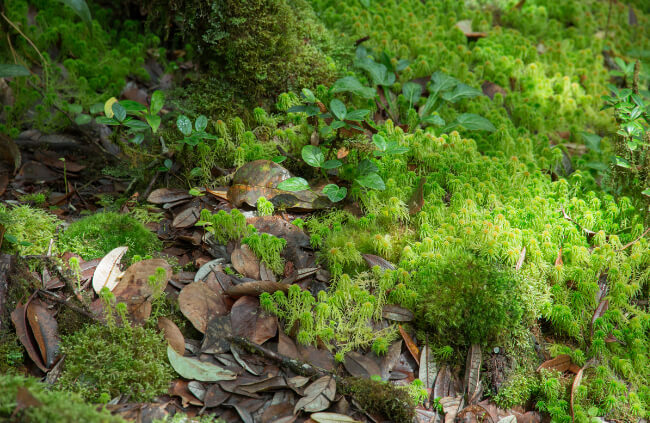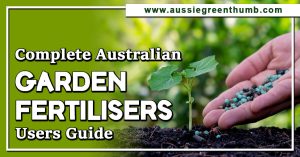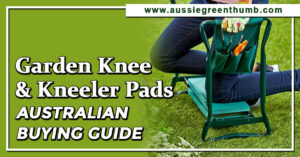Peat moss is a traditional soil additive made from the dried, dead, remnants of sphagnum mosses. It is harvested through largely unsustainable practices, but parting with it as gardeners can be difficult, as the decades-long battle to halt peat harvesting across the world demonstrates clearly.
In 2024, the use of peat moss will be banned for domestic use in the UK and Canada, and in 2024/25 it will be banned even for commercial use in agriculture and the horticultural trades. The rest of the world, including Australia, is likely to follow, so now is the time to get used to alternatives to peat and peat moss.
There are alternatives, which can be used to equal effect in most cases, and in many cases, alternatives to peat moss are actually better than the traditional material. In this article, we’ll look at where peat moss comes from, as well as how it was used.
More...
What is Peat Moss?

Peat moss, or sphagnum peat moss, is the decayed moss, grown, dried, dead, and covered, in million-year cycles. It creates dense bogs and unique habitats, as well as being an incredibly effective carbon-locking tool for Mother Earth.
Its uses in gardening have traditionally been as a soil additive, particularly well-suited to improving dry, cracking, or fast-draining soils. It doesn’t add nutrients in any significant capacity, but it does hold onto them, and make others that exist in the soil more accessible to plants.
What’s the Difference Between Peat Moss and Sphagnum Moss?
Peat moss, also called sphagnum peat moss, is the long-decayed moss contained within peat bogs. Sphagnum moss is the moss that grows on the surface.
Sphagnum moss is significantly more sustainable than peat moss and can be processed into a similarly useful growing medium. Its harvesting is still generally destructive of habitats.
While living, sphagnum moss is one of the most effective carbon-locking plants on earth. As it decays, it becomes peat moss, but this process takes many, many years.
Harvesting and Using Peat Moss
Harvesting peat is a destructive process with proven and widely accepted damages to the earth, not just in terms of its traditional use in fires, but because its removal limits the earth’s ability to heal imbalances, as well as actively releasing captured carbon and methane.
Modern peat harvesters are looking at ways to speed up peatland rejuvenation, but currently, none have offered a solution that meets the rate of decline of these habitats.
In Canada, some peat moss harvesters are attempting to self-regulate their consumption and exploitation of peatland by setting aside conservation zones. Their methods include research into increasing rejuvenation rates of peatland (currently 1mm per year).
The Damage Done by Harvesting Peat and Peat Moss
The damage done by peat harvesting isn’t just in the removal of the sub-layer of peat. It is as bad, if not worse when the top layer (peat moss) is harvested by itself.
Carbon release from harvesting peat
When peat moss is harvested, the newly exposed surface of peat below oxidises and releases millennia’s worth of carbon into the atmosphere, increasing global heating exponentially.
Ironically, the people that are worst affected by this heating are the commercial growers and gardeners who have actively spearheaded the use of peat as a global growing medium for over a century.


Get Your Free Guide:
Master Growing Australian Natives eBook
A Must Have Complete Guide for Every Australian Garden
Get Your Free Guide:
Master Growing Australian Natives eBook
A Must Have Complete Guide for Every Australian Garden
Greenhouse gas release
It’s not just carbon that gets released, there are other greenhouse gases, including methane, released into the atmosphere for years after the destruction of surface layers of peatland. The damaged peatlands contribute 4% of the global total greenhouse gas emissions each year.
Flooding caused by harvesting peat
Part of the reason peat became such a popular garden soil additive was for its moisture retention. Again, there’s a clear irony in the surprise of generations of gardeners, when they realised that by using this non-renewable material in our gardens we were removing moisture retention from nature.
The result is mass flooding, and sudden and significant changes to water flow across the landscape, where peat bogs no longer exist to retain water.
Habitat destruction
Wading birds, unique species of reptiles and increasingly rare plants depend entirely on peat bogs and marshes to survive. Some birds are entirely evolved to camouflage in the boggy wetlands that peat and sphagnum moss provide.
In Borneo, 60% of orangutans have been lost in under sixty years, a species now at severe risk, with much of its decline attributed to peatland destruction.
The knock-on effect of removing those bog landscapes, and increasing flood risks, is that all of those habitats are lost.
Today, nearly 15% of all peatland on earth has been lost forever through commercial harvesting. According to the United Nations, that equates to an area of 50 million hectares (half the size of Egypt).
Understanding Where Peat and Sphagnum Moss Come From
Sphagnum moss can be harvested and rejuvenated and many sites across the world are doing this very effectively, with some, including in Canada and the UK, focussing on conservation rather than harvesting having better results.
Re-establishing the top layer of sphagnum moss on peatland naturally takes about 20 years from spores and natural spread, but with human intervention, it can be sped up to about 8 years to re-establish the top layer of sphagnum.
It’s important to note that it is possible to grow sphagnum moss sustainably, and without peatland, but currently, the research about this is one-sided, and dominated by the peat industry.
Future generations will likely benefit from this innovation and many believe it will play an important role in garden water conservation to help mitigate drier summers.
Why Did We Use Sphagnum Peat Moss?
Sphagnum peat moss has been used in gardens for centuries if not millennia. It is probably the most effective all-round soil conditioner ever harvested and can have a big impact on reducing water and irrigation in gardens.
Traditional Uses for Peat Moss
Peat moss (sphagnum moss in its dried or decayed form) is a useful additive to planting, particularly for pot plants. While it holds moisture, similarly to peat, it also improves and regulates drainage.
Once processed and sieved, peat moss also provides a stable germination environment for most seeds (though coir is equally effective).
Traditional Uses for Peat
Peat itself can be used as a growing medium, or added to soil to boost fertility, improve soil structure of nearly all soil types, and support nutrient regulation to boost plant growth at all stages.
It was also used, once dried, as a fire log alternative – burning slowly, and providing heat for longer than coal or timber. Harvesting of peat will not be banned in 2024, but its use in domestic gardens will be in many countries.
Alternatives to Peat moss
Peat moss might be a useful addition to gardens, but it comes at a cost. There are no completely sustainable sources of natural peat moss and all contribute to habitat destruction and the release of harmful gases.
There are many effective alternatives to peat, which are cheaper, vastly more sustainable, and often more effective for specific roles.
Peat moss is a soil improver, not a fertiliser. It makes nutrients more accessible and supports drainage. Some inert substrates, like coir or sheep’s wool, are essentially identical in their function.
Others, like composted manure, actively feed plants as well as offering wonderful soil-improving qualities too.
Coconut Coir
Coconut Coir, or Coconut fibre (there are many forms) is a great alternative to peat. Its pH is more neutral so it suits a wider range of plants, but can cause slower development of seedlings, which do benefit from the slightly more acidic range of peat moss in their early stages.
On the whole, coconut coir is the best all-around alternative to peat moss and can be used in a variety of ways.
Wool
Wool, particularly composted wool, is an exceptionally useful soil additive. It takes years to fully break down, meaning it continues to aerate the soil and open up compacted earth.
As a mulch, wool is especially useful for vegetables. Slugs hate crawling over fresh wool and as it slowly breaks down it works into the soil to do the same job as peat moss.
Garden wool has many forms and is increasing in popularity. Experimenting with each can offer great results.
Composted bark
Composted bark is one of the most humus-rich soil additives you can use. It holds onto moisture exceptionally well, but also encourages soil life to incorporate it actively. This produces brilliant results whether you use fully composted bark as a growing medium or part composted bark as a mulch.
Bracken
Bracken is a general term for landscapes filled with ferns, particularly once those ferns have died back. Once composted, bracken is near-neutral making it a great all-around growing medium and soil additive.
Because bracken can be composted from dead fern leaves, the plant itself will recover each year. Growing your own bracken for composting is one of the cheapest ways to produce an effective peat alternative at home.
Garden compost
The beauty of garden compost as an alternative to peat is that you can pretty much manage it to your own needs. If you need it to be more acidic, add manures that are high in ammonia. If you need it more neutral, make sure to compost a mix of green and brown materials, and allow it to mature completely.
Compost offers nutrients to plants, unlike peat, which supports nutrient uptake from other sources, so it is not a suitable alternative for germination or cuttings. For mulching, or repotting mature plants, compost is a much more effective growing medium than peat or peat moss.
Composted manure
Manure, even when completely composted, is slightly acidic. When fresh it is far too acidic to use with any tender plants (though roses and woody shrubs can thrive with fresh manure mulches in the right conditions).
Fully composted manure, broken down to the point it has a soft, loamy consistency, and no visible straw or remaining odour, is perhaps the most accurate peat moss alternative for mature plants. Its slight acidity improves nutrient uptake, just like peat.
However, because even composted manure is a rich fertiliser in itself, it is not suitable for germination trays (but does make a good mixer for garden compost when direct sowing outdoors).
Leaf mould
Leaf mould is a nearly inert growing medium. It can be used as a base for compost and other soil additives and is exceptionally water retentive, while also offering that important feature of peat moss: regulated drainage.
While its pH is near-neutral (meaning it doesn’t offer the same gentle encouragement to seedlings as peat) it offers pretty much identical results in germination, cuttings, repotting and mulching in most reported trials.
Peat Moss Frequently Asked Questions
What plants like peat moss?
Any plants that naturally grow attached to trees (epiphytic plants) grow well in peat moss, which works as a stable medium, but allows drainage and aeration of roots but bark and coconut coir are good alternatives.
Is peat moss acidic?
Peat moss is slightly acidic (4.5-5.0 pH) which is part of its appeal. Thanks to its acidity, peat moss is a useful additive for acid-loving plants like ferns and blueberries.
Can you plant straight into peat moss?
You can plant directly into peat moss but for best results, it should be mixed with other topsoil or compost.
Why is peat being banned?
Peat isn’t being banned in Australia. In other parts of the world, peat is being phased out or banned entirely due to the environmental damage of harvesting it.
Why are peat-free composts not as good?
Many peat-free composts are significantly better than peat-containing composts. However, some budget peat-free composts are constituted of mixed council waste, and tend to dry out on the surface, but remain wet underneath, leading to overwatering.
Conclusion: Should We Keep Using Sphagnum Peat Moss?
Peat is being phased out across the world for good reason. The less we use in our gardens the better. The same goes for peat moss and products that rely on the destruction of peatlands.
Even though Australia has no plans to ban peat any time soon, if you rely on sphagnum peat moss for your trade, or have spent a lifetime growing plants with peat or peat moss as an additive, now is the time to get to know the alternatives in intimate detail. Phase out your use of peat and peat moss before it’s too late.
Published on June 4, 2023 by Gary Clarke
Last Updated on September 20, 2025




